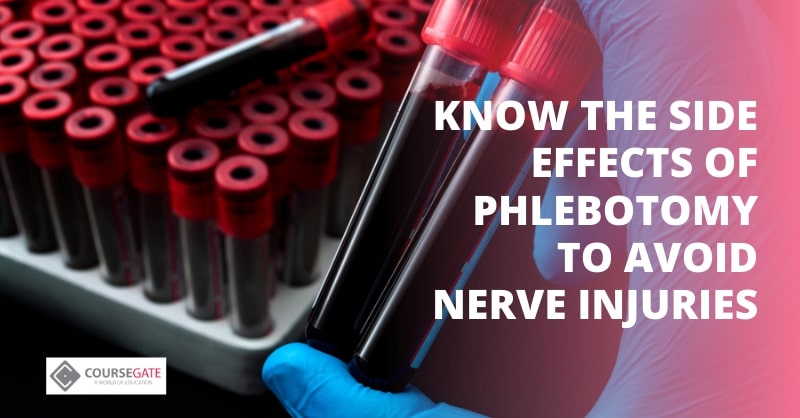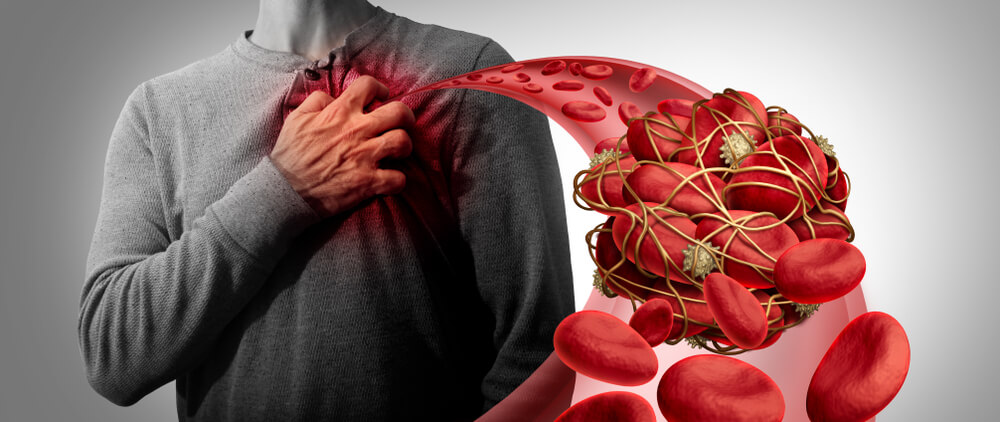

Phlebotomy is the process of blood withdrawal for checking any diseases or for other medical-related issues. It can also be termed as a blood draw. It is not a very painful process, as many people might think. The whole process would be done within the blink of an eye. However, there are some side effects of phlebotomy.
The side effects are not very fatal but are definitely worth being aware of. This article would give you an idea of phlebotomy and the side effects of phlebotomy. It is a must-read if you are an aspiring medical professional or someone who needs to undergo phlebotomy.
What is Phlebotomy?
Phlebotomy is a process when someone uses a needle to draw blood from a vein. This process is essential in diagnosing any medical issues or curing any diseases. Sometimes the blood drawn is sent to the medical laboratory for further testing, and sometimes this blood is used as a cure for many diseases. Phlebotomy also helps remove the extra red blood cells from your body, generally the most unusual and less functioning ones.
Some of these blood tests have some requirements before they are done. For example, some expect fasting or not eating before 8-10 hours of the test. But, you need not worry about that too much. Your doctor or nurse will instruct you according to the nature of the test.
However, the process of drawing blood can make some people feel giddy, especially after it is done. It involves you sitting down in an upright position and resting your arm on a table. The phlebotomist or nurse will tie a band on your arm to trap the blood in that particular area, and then use needles to draw blood. It is advised to drink a lot of water after this process.

This is to ensure more RBC’s and WBC’s are formed. Also, some people are pretty sensitive to the needle, so keeping your eyes closed during the process is better. The needle for blood withdrawal will be connected to a small tube. This tube then allows the blood to flow into a bag.
But, more than one test tube needs to be filled up with blood if it is for a particular test—for example, typhoid, dengue, COVID-19, etc. Also, if you’re having blood removed as part of treatment, the amount of time it takes depends on how much blood is needed.
Side Effects of Phlebotomy
Amongst the numerous advantages of phlebotomy, there are some side effects too. These side effects might be minor for some people but very major for others. This is because different patients have different body mechanisms and ways of reacting to specific treatments or medical procedures. Therefore, some patients might be more sensitive to phlebotomy, whereas others might be totally alright with the whole procedure.
However, there are few common side effects of phlebotomy. Some of them have been mentioned below:
Vasovagal Reaction
This reaction occurs from a physical response from your body’s nervous system. It is an instant reaction that your nervous system shows towards activities such as blood withdrawal, seeing blood, or standing for a long time. This reaction can make you feel dizzy and nauseous. During this reaction, you are also likely to notice-
- Pupils being belated
- Abnormal body movements
- Light-headed
- Blurred vision
- Feeling of warmness in the body
This happens when you see the blood drawn out from your body or get too scared of the whole phlebotomy process. Vasovagal reaction in your nervous system also makes you sweat a lot suddenly, and as a result, your heart rate and blood pressure drop. The reduced blood pressure causes diminished blood flow to your brain, which leads to unconsciousness. Sometimes, this process can get significantly escalated due to body weakness.
So, when a certain amount of blood is drawn out from your body, it makes you even weaker. In the worst-case scenario, an individual can even faint because of the vasovagal reaction. If that happens, it is an indication that the situation has gotten very serious. But, overall, this reaction is harmless for your body and usually needs no treatment or cure. You just need to rest and drink lots of fluid.
Anaemia
Anaemia is a health condition that arises due to the lack of blood cells in your body. When there is a lack of blood cells, your body has a red blood cell deficit. This means that less oxygen is being carried to your body tissues. As a result, you lack energy and stay less healthy and fit.
When you have anaemia, it generally means that your blood contains less haemoglobin. And, having less haemoglobin means that you get tired and weak very quickly. Haemoglobin is basically a protein found in your red blood cells. It carries oxygen in your body, and this is what gives the red colour to your blood.
Although the level of haemoglobin in the blood varies from person to person but for females, the levels are much lower than men. This is because of the female menstrual cycle every month. Therefore, the effect of phlebotomy can be worse on women than men.
However, when the condition worsens, doctors usually suggest eating more iron. This is because iron creates haemoglobin in your blood, Some food items that includes iron are- spinach, red meat, liver, etc. So, why is anaemia one of the side effects of phlebotomy? When blood is drawn out of the body during phlebotomy, the volume of red blood cells in your blood drops.

This causes more weakness in the body, and you get exhausted and feel less healthy. Anaemia can be of different types and with varying levels of severity. The effects can be both temporary or permanent, dispensing on the seriousness of the situation. If your condition gets worse, the doctor might suggest you take some iron supplements or other medicines. You might even need to follow a strict diet.
Hyperventilation
Hyperventilation means deep breathing in and out. People usually do this when they are anxious, scared or in a painful situation. It basically implies over-breathing, in simple words. But, when you over breathe, it might leave you breathless at one point. When we breathe, we exhale carbon dioxide and inhale oxygen into our lungs. So, hyperventilation means that excessive carbon dioxide levels are exhaled from your body, and your blood contains very low carbon dioxide. As a result, more and more oxygen gets deposited in your blood, more than required. This is when things go wrong.
During phlebotomy, when someone gets scared or anxious during the blood withdrawal process, there are chances of them taking long and deep breaths. Due to this, you could even experience some muscle pain in your body as well. This could result in hyperventilation. To recover from hyperventilation, you could cover your mouth and just breathe in through your nose. This would take in less oxygen into the blood. Also, try to relax and think about positive things when this happens. However, if you are a heart or lungs patient, it is better to get some medical help as soon as possible.
Thrombosis
Thrombosis means blood clotting. It is your body’s first line of defence mechanism against excessive bleeding. Therefore, when we cut ourselves, our blood clotting mechanism automatically forms a seal on that area. This is done to avoid the loss of any more blood vessels from your body.
Our bodies often break down the clot after we’ve healed, but clots sometimes form inappropriately or fail to dissolve after an injury. These clots are called a thrombus. It forms and stays in our blood vessels. A blood clot that forms and remains in a blood vessel is called a thrombus. So, how is this one of the side effects of phlebotomy?

The phlebotomy process can last for some extra minutes if more than one tube of blood is required. So, since blood loss is lost from our bodies, our body’s defence mechanism is likely to jump in and create blood clots inside our bodies to avoid blood loss. This process can be worse if the blood clots are formed excessively. More and more blood clots mean that blood will be less dilute, and it will carry less carbon dioxide, oxygen and other nutrients throughout the body. In a worst-case scenario, your doctor would prescribe some injections or medicines to avoid this blood clot.
Conclusion
Phlebotomy is a beneficial process for the diagnosis of diseases as well as for the treatment of any illness. However, the whole process can be excruciating for some, and as a result, they are likely to show the side effects of phlebotomy discussed above. And, if you think that phlebotomy is a career that you might be interested in, you can enrol in our Phlebotomy Technician course. It contains all the essential elements to learn about phlebotomy and its side effects. It will make you job-ready instantly!
- All Courses
- IT & Software98
- Microsoft Office66
- Nonprofit & Charity15
- Health & Safety87
- Life Style72
- DIY43
- On Demand Courses38
- Quality Licence Scheme Endorsed113
- Health and Fitness77
- Health and Care159
- Admin39
- Digital Marketing48
- Psychology & Counselling83
- Teaching and Education99
- Design75
- Management129
- Beauty42
- Accounting62
- Employability197
- Human Resource42
- Personal Development131
- Marketing59
- Business153
- Photography38
- Language26













